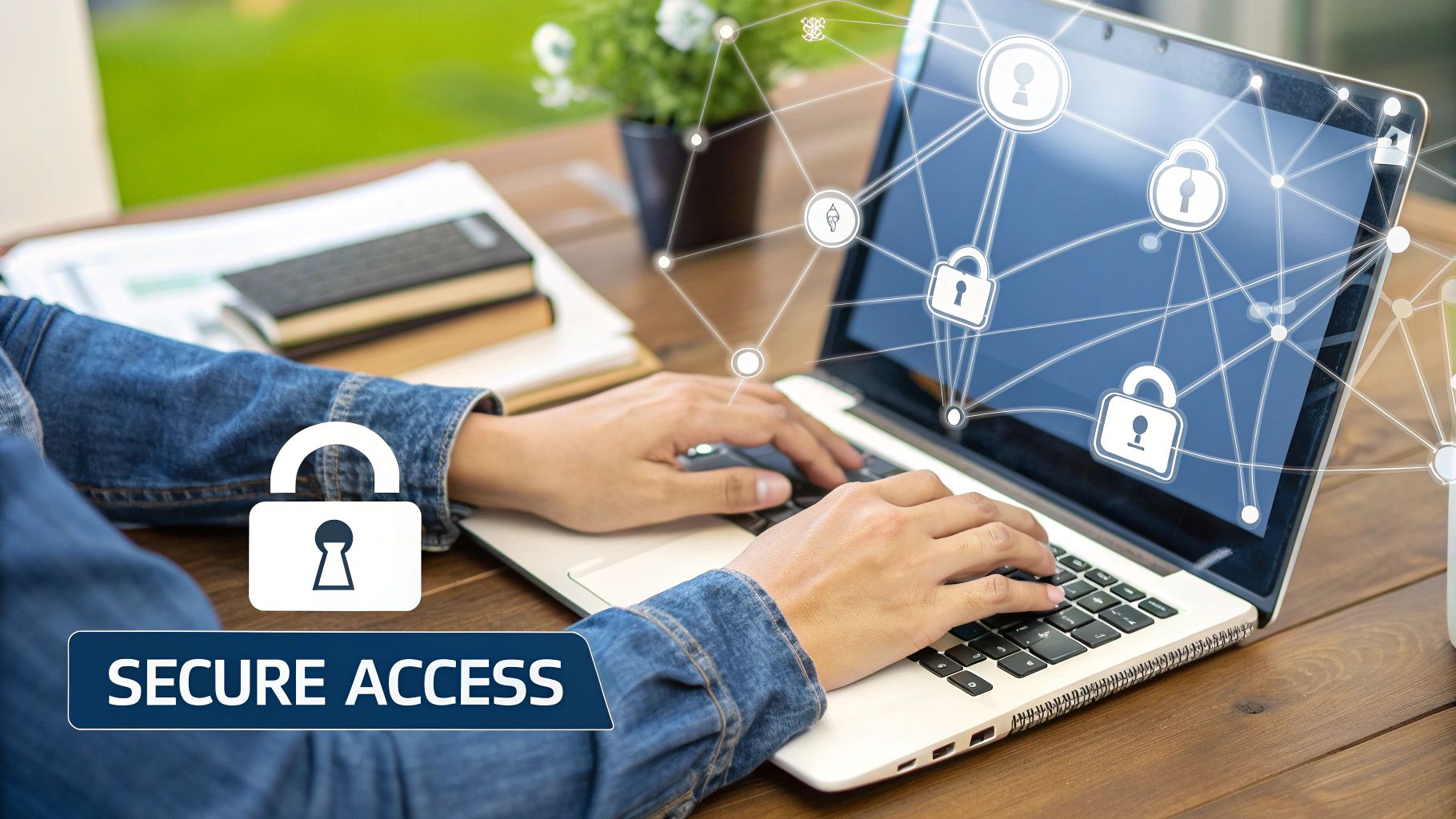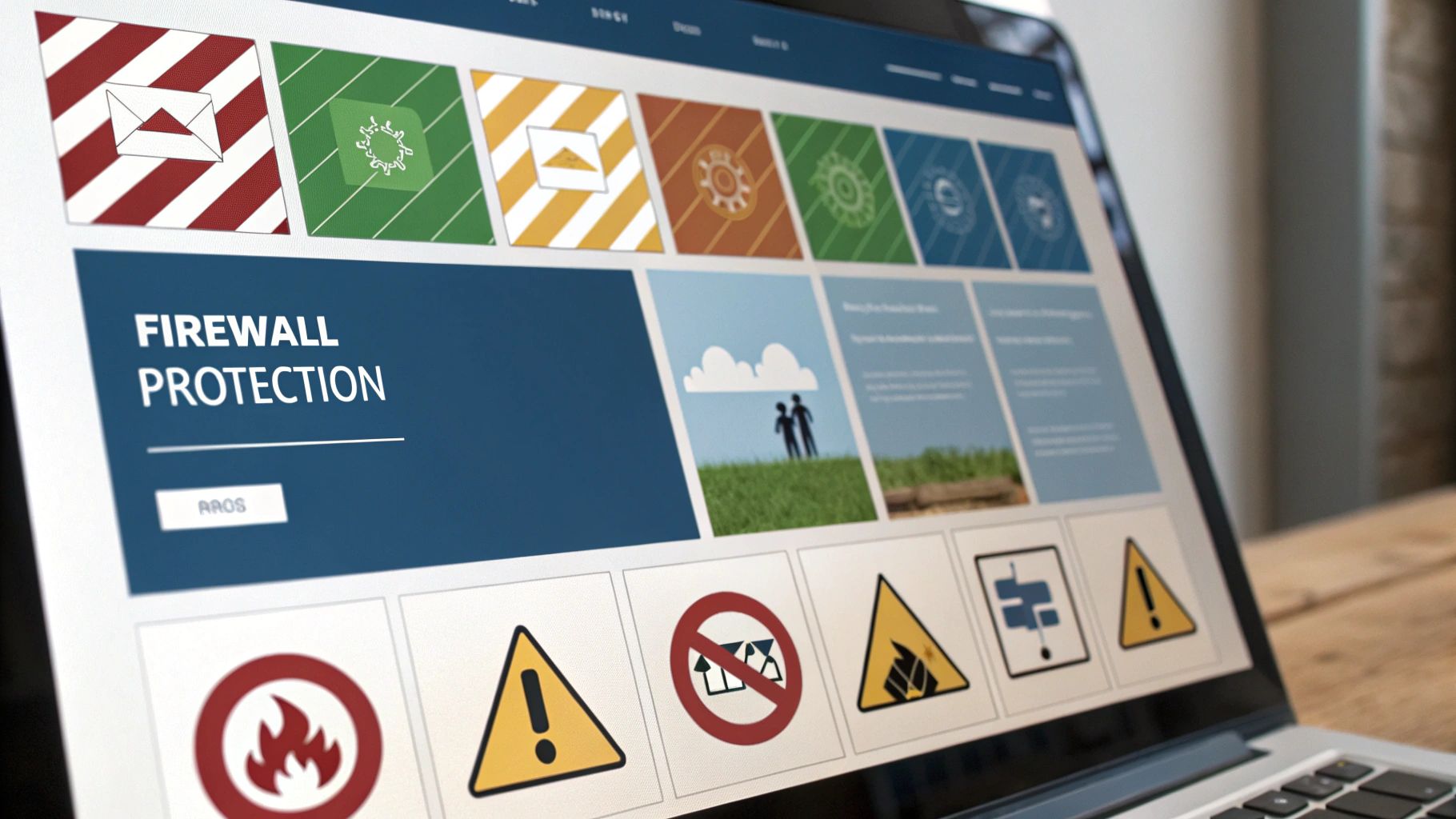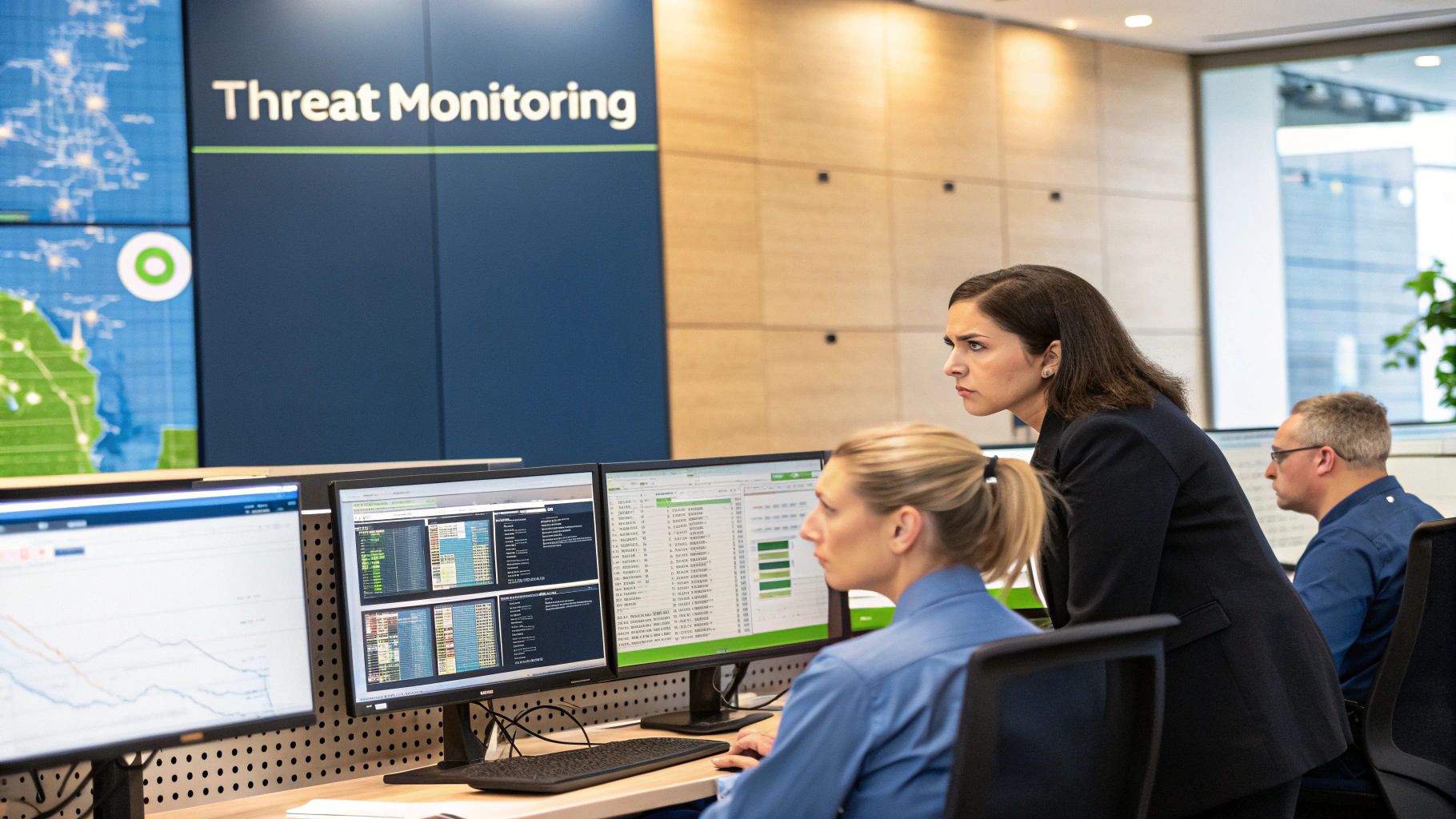Essential Cybersecurity Best Practices: A Comprehensive Guide for Modern Organizations
Understanding Today's Threat Landscape
Basic security tools like firewalls and antivirus software are no longer enough to protect against modern cyber threats. With over 75% of targeted cyberattacks starting through email phishing attempts, organizations need multiple layers of protection. The first step in building effective defenses is understanding exactly what you're up against.
Evolving Attack Patterns and Vulnerable Organizations
Many companies make the mistake of focusing solely on blocking external attacks through perimeter security. But today's threats come from many directions – compromised employee accounts, social engineering scams targeting staff, and even insider threats from within the organization. Simply put, the human element represents one of the biggest security risks. Staff members can inadvertently create vulnerabilities through actions like using weak passwords or clicking dangerous email links.
The Real Cost of Cyberattacks
When a cyberattack hits, the damage goes far beyond just financial losses. While cybercrime caused $12.5 billion in direct costs during 2023 (projected to reach $13.82 trillion by 2028), the long-term impact on customer trust and brand reputation often hurts companies even more. Add in regulatory fines and legal expenses, and the total cost of a breach becomes staggering. This is why prevention through strong security practices matters so much.
Assessing Your Risk Landscape
Before implementing security measures, organizations need to map out their specific risks and vulnerabilities. This requires a systematic approach to identify what needs protecting.
Here's a practical framework for assessing your risk landscape:
- Identify Critical Assets: Map out which systems, data, and infrastructure are essential for your operations
- Threat Assessment: Analyze likely threats based on your industry, location and current security
- Impact Analysis: Calculate potential damage from successful attacks on key assets
- Risk Prioritization: Focus resources on addressing the most serious risks first
Adapting Cybersecurity Strategies for the Future
Remote work during COVID-19 exposed new security gaps that attackers quickly targeted. The FBI and CISA reported surges in attacks on remote access systems as workers moved home. As technology changes, cybercriminals adapt their methods. The key is staying alert to emerging threats while consistently following security best practices. With a clear understanding of risks and proper protective measures in place, organizations can defend their assets effectively even as threats evolve.
Building Human-Centric Security Defense
Strong technical security measures are essential, but people remain the key factor in effective cybersecurity. Even the best security tools can't prevent an employee from accidentally clicking a phishing link or entering credentials on a fake website. This means organizations need to focus on turning their employees from potential weak points into active defenders of company security.
Why Traditional Security Awareness Training Falls Short
Most security training programs take a checkbox approach focused on compliance rather than changing behaviors. Employees often rush through yearly online modules and quizzes just to get them done. The results speak for themselves – one study found only 12% of employees could spot phishing emails after completing standard training. These numbers show we need better ways to teach security awareness that actually stick with people.
Engaging Employees Through Innovative Approaches
Smart companies are moving away from dull training videos by adding interactive elements that reflect real situations. For example, they run simulated phishing campaigns to help employees recognize red flags in suspicious emails. Some organizations use game-like training where staff earn rewards for good security practices, making learning more fun through friendly competition. They also share real examples of cyberattacks to show employees what can actually happen, making the lessons more meaningful.
Building a Culture of Security Awareness
Good security needs to become part of daily work life, not just an annual training event. Simple things like sharing quick security tips in company emails or chat channels keep best practices fresh in people's minds. It's also crucial that employees feel safe reporting anything suspicious without fear of getting in trouble. Having a clear process for reporting potential threats helps catch problems early before they become major incidents. Regular communication and positive feedback create an environment where everyone actively thinks about security.
Measuring Program Effectiveness and Maintaining Engagement
Organizations must track how well their security awareness efforts work over time. This includes monitoring key metrics like how many employees click on test phishing emails or report security concerns. Regular knowledge checks through quizzes and simulated attacks show if training is making a difference. But keeping people engaged takes ongoing work. Mixing in new challenges, updating materials, and recognizing employees who practice good security helps maintain momentum. With consistent reinforcement and measurement, companies can build security awareness that truly protects their systems and data by making every employee an active defender.
Implementing Essential Security Technologies
Just like a medieval castle needed multiple layers of defense, modern organizations need various security measures working together to protect their digital assets. While having well-trained employees is essential, it must be paired with the right security tools and systems. This section covers how organizations can effectively select and implement key security technologies as part of their defense strategy.
Choosing the Right Tools for Your Needs
With countless security vendors and tools available, finding the right solutions can feel overwhelming. Rather than chasing after every new product that promises perfect protection, successful organizations focus on selecting tools that match their specific situation. The key is choosing solutions that align with your risks, resources, and technical capabilities.
For instance, small businesses often do better with easy-to-manage cloud security tools, while larger enterprises may want complex on-site systems for maximum control. When evaluating security technologies, consider these core factors:
| Feature | Description |
|---|---|
| Effectiveness | Does the tool effectively address the specific threats you face? Look for proven track records and independent testing. |
| Integration | How well does it integrate with your existing infrastructure and other security tools? Seamless integration is key for streamlined management. |
| Usability | Is the tool easy to use and manage for your IT team? Complex tools can be difficult to maintain and may lead to misconfigurations. |
| Cost | Does the tool's price align with your budget and the value it provides? Consider both upfront costs and ongoing maintenance expenses. |
| Scalability | Can the tool scale to meet your future needs as your organization grows and evolves? |
Key Security Technologies to Consider
While each organization's needs differ, certain fundamental security tools form the backbone of solid protection:
- Firewall: Acts as your network's gatekeeper by controlling traffic based on security rules. It stops unauthorized access while allowing legitimate traffic through.
- Intrusion Detection/Prevention System (IDS/IPS): Works like a security guard, watching network traffic for suspicious activity and either alerting you to threats or actively blocking them.
- Endpoint Detection and Response (EDR): Keeps constant watch over devices like laptops and desktops, catching malicious activity that gets past other defenses.
- Security Information and Event Management (SIEM): Collects and analyzes security data from across your network, helping you spot patterns and respond to issues faster.
- Data Loss Prevention (DLP): Prevents sensitive information from leaving your network without approval, protecting against both accidents and deliberate data theft.
Integrating and Managing Your Security Stack
Getting the most from your security tools requires more than just buying them – they need to work together smoothly as a unified system. This means carefully planning how different solutions will share information and complement each other's capabilities.
Just as important is keeping everything updated and properly configured. Security tools need regular maintenance to stay effective against new threats, similar to updating your home's locks and alarms to counter evolving break-in methods. By selecting appropriate tools and managing them well, you create strong defenses that significantly reduce your risk of successful cyberattacks.
Securing Remote and Hybrid Workforces
As companies adopt remote and hybrid work models, their security needs have fundamentally changed. While employees gain flexibility to work from anywhere, this distributed approach creates new security challenges that need careful consideration. Organizations must now protect sensitive data and systems accessed from home offices, coffee shops, and various other locations – each introducing potential vulnerabilities.
Endpoint Protection in a Distributed Environment
Strong endpoint security is essential when employees work remotely. Basic antivirus software alone isn't enough – companies need multiple security layers working together. Modern Endpoint Detection and Response (EDR) tools watch for suspicious activity in real-time and can quickly respond to threats. Just as important is keeping all software and operating systems updated with the latest security patches. Think of each laptop, phone and tablet as a possible entry point that attackers could exploit. With remote access tools increasingly targeted by cybercriminals, protecting these endpoints is more critical than ever.
Secure Collaboration and Communication
Remote teams depend heavily on digital tools to work together, but these same collaboration platforms can become security weak points if not properly protected. That's why requiring multi-factor authentication (MFA) for all business applications is so important – it adds an essential extra verification step beyond just passwords. Regular security awareness training is equally vital. Teaching employees to spot phishing attempts and avoid clicking suspicious links helps create a human line of defense against social engineering attacks, which remain one of the most common ways systems get compromised.
Implementing a Zero-Trust Architecture
The old security model of trusting anyone inside the company network no longer works for distributed teams. Zero Trust takes a "never trust, always verify" approach instead – requiring authentication and authorization for every access request, regardless of where it comes from. This means giving employees the minimum access needed for their role and continuously monitoring activity for signs of compromise. While setting up Zero Trust takes more work upfront, it provides the security modern remote workforces need. The model helps prevent attackers from moving laterally through networks even if they breach one account. By carefully implementing these security best practices, companies can enable productive remote work while keeping their data and systems safe.
Developing Incident Response Strategies
Even the best security measures can't guarantee complete protection. That's why having a solid plan for handling security incidents is essential. Just as a business needs insurance despite strong safety protocols, organizations need clear procedures for managing cybersecurity issues when they occur. Let's look at how successful companies handle security incidents from start to finish.
Early Detection and Effective Triage
Quick identification of potential threats is the foundation of good incident response. Security teams need to act like emergency room doctors – rapidly assessing which issues need immediate attention. Modern Security Information and Event Management (SIEM) systems help by monitoring network activity and flagging suspicious patterns. For instance, if there's an unusual spike in failed login attempts at 3 AM, that could mean someone is trying to break in. By catching these warning signs early, teams can often stop an attack before serious damage occurs.
Containment and Mitigation Strategies
When a security incident is confirmed, the first priority is stopping it from spreading. Think of it like containing a fire – you need to create barriers to prevent it from jumping to other areas. This might mean disconnecting infected computers, blocking suspicious IP addresses, or taking compromised servers offline. At the same time, teams work to reduce the impact by fixing vulnerabilities and strengthening security measures. These steps help minimize both damage and downtime.
Recovery and Post-Incident Analysis
After containing the threat, focus shifts to getting systems back to normal. This requires good backups and a clear plan for restoring operations. But the work isn't done once systems are running again. Just as doctors study challenging cases to improve future care, security teams need to analyze what happened. By reviewing logs, talking to affected staff, and examining procedures, they can identify how to prevent similar incidents. If phishing emails were the problem, for example, they might improve email filtering and update security training.
Building Adaptive Response Capabilities
Security threats keep changing, so incident response plans must evolve too. Regular review and updates are essential, incorporating lessons from past incidents and new types of attacks. This includes ongoing training and practice scenarios to keep security teams sharp. It's also smart to build relationships with outside security experts who can provide specialized help during major incidents. Taking this active approach helps organizations stay ready for whatever threats emerge, while keeping business operations running smoothly.
Maximizing Security Investments
A thoughtful cybersecurity strategy is essential for modern businesses, but budget allocation requires careful planning. Just like smart financial investing, security spending needs to be strategic and targeted to provide the best protection for your resources. Instead of treating security as an expense, view it as protecting your organization's core assets and future. Let's explore practical ways to build and measure security investments that provide real value.
Calculating Security ROI and Prioritizing Investments
Understanding where security spending has the most impact is key to making smart decisions. While measuring security ROI isn't simple, it goes beyond just preventing immediate breach costs. A good example is email security – while the upfront price of a robust system may seem high, it's minimal compared to the devastating impact of a successful phishing attack that leads to data theft, regulatory penalties, and legal expenses. This highlights why smart prioritization matters. Start by mapping your critical assets, evaluate which threats pose the biggest risks, and focus resources on protecting your most vulnerable areas first. Think of it as fixing the weakest spots in your defenses before anything else.
Communicating Value to Stakeholders
Getting buy-in for security investments often means explaining complex threats in business terms that resonate with decision makers. Rather than getting technical about a new firewall's specs, focus on how it prevents ransomware attacks that could halt operations and damage customer trust. Present security spending in terms of enabling business goals, supporting productivity, and protecting revenue. Use clear metrics and reporting to show how security measures reduce risks, maintain compliance, and keep the business running smoothly.
Balancing Tactical Needs with Strategic Goals
Good security requires handling both urgent issues and long-term planning effectively. Day-to-day needs like patching vulnerabilities and updating hardware are important, but so are strategic priorities like building a security-aware culture, implementing Zero Trust architecture, and developing incident response capabilities. Like running any successful business, you need quick wins alongside bigger objectives. This balanced approach helps organizations adapt to new threats while maintaining solid security even with limited budgets. Regular reviews of security performance metrics and emerging risks ensure investments keep delivering strong results over time.
Ready to improve your web development and security approach? Check out DebugBar for insights on key technologies and industry best practices. Visit DebugBar to learn more.




Comments
Leave a comment